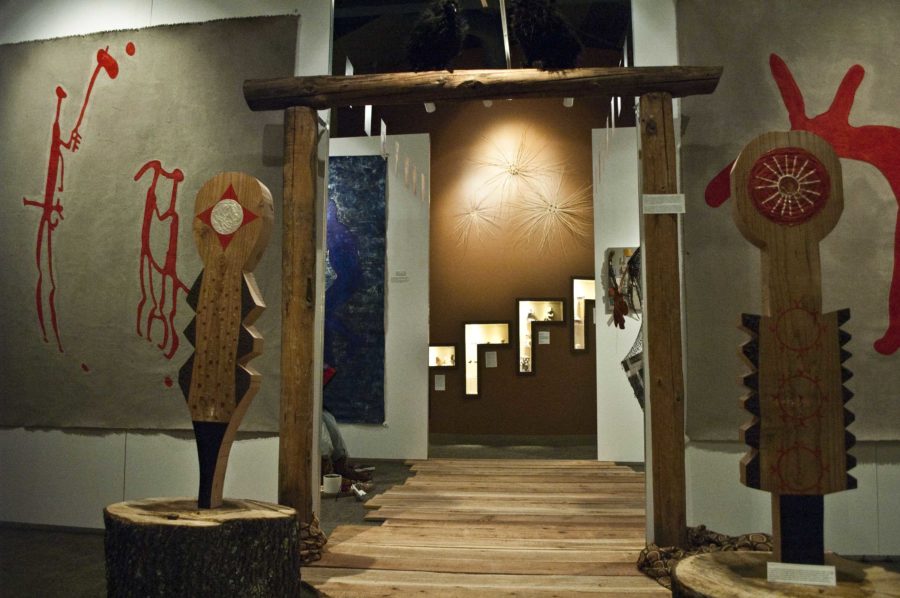Ancient relics and artwork from Northern Europe fill the walls of Santa Rosa Junior College Museum. “Transformations,” the new Scandinavian Rock Art exhibit provides viewers with a look at several old taboos still culturally significant today.
SRJC Behavioral Sciences Chair Jürgen Werner Kremer, who arranged the exhibit, presented a lecture on the artwork Oct. 17 in Newman Auditorium. The exhibit features a photo documentary and his own artistic exploration of prehistoric Scandinavian art.
The art collection originates from two different places in Sweden: Bohuslan in Southern Sweden and Nämforsen in Northern Sweden. The rock art images from Bohuslan are dated from 1,500-5,000 B.C. and the Nämforsen art from 3,500-2,500 B.C.
As Kremer approached the podium excitement hushed the crowd. Kremer expressed the significance of ancient culture. “I am hoping that people are able to engage more deeply with an indigenous world view and look more deeply into ancestry,” hesaid.
The exhibit showcases Kremer’s adopted versions of Scandinavian rock art, such as the Snake Prayer, a piece based on the Midgardsnake, a serpent in Old Norse mythology that holds the world.
NetWoman or Women of Memory is another piece that has been interpreted by Kremer. The NetWoman has the capacity to take in shadow material or bad memories and to breathe them out purified and healed.
During the lecture Kremer delved into cultural tragedies and explained through his art collection how people can begin to acknowledge these tragedies in order to heal. “I want people to be able to deal with the shadow aspect of our history,” Kremer said.
Two wooden waist-high guardians flank the entrance of the exhibit; one is female and the other male. The statues are inspired by Northern Germany, dating back to the Iron Age. These statues are protectors of dangerous passages, Kremer said.
Behind the guardians is a portal, a passageway through physical space. On the archway of the portal are ravens, called the Openers. The raven’s names are Huginn, meaning intent or consciousness and Muninn, meaning memory.
To the left of the entrance are works of art from the south; to the right are works from the north. “It’s an experience. You can feel the power of these objects; you get an experience of the Shamanic culture,” said Sharon Kocher, an SRJC community member.
The lecture ended with a tribal dance performed by SRJC students Kelsey Smith, Lucy Lewis and Natalie Makardi. The dance started off with the three women covered in blankets lying on the floor. The lights were brought down low and a hum rose through the air as Kremer played Shamanic drums.
The dancers caught the beat of the drum and slowly began to writhe under the blankets. Gradually the drumbeat became softer and the women revealed their arms, reaching up toward the sky. Bit by bit each body part was revealed until the blanket was no longer covering them.
Gracefully each woman began to dance. As the drum beats, the pure and fluid movement of the dancers wove a story that captivated the audience. The dance ended with one last moan lingering in the air until all three women stopped. With the power of the drum still echoing in the air, the audience sat in silence locked into a state of awe.
The Scandinavian rock art exhibit runs from 9 a.m. to 4:30 p.m. Monday thru Thursday and from 9 a.m. to noon Friday until Dec. 16. in Bussman Hall at the SRJC Museum. The exhibit is free for SRJC students and community members.
Scandinavian rock art on display at SRJC Museum
The Scandanavian Rock Art exibit displays art from two different regions in Sweden dating back from 1,500-5,000 B.C. and 3,500-2,500 B.C. The exibit is free to students.


